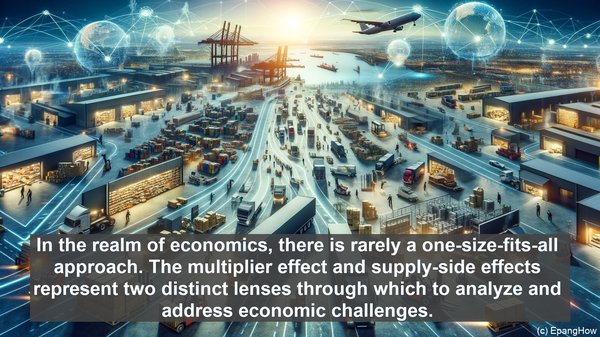Introduction: The World of Economics
Hello everyone, and welcome to today’s article. Economics, the study of how societies allocate limited resources, is a complex and ever-evolving field. Today, we’ll be diving into two prominent economic theories: Keynesian economics and classical economics. Specifically, we’ll be exploring the multiplier effect in Keynesian economics and the supply-side effects in classical economics. By the end of this article, you’ll have a clear understanding of these concepts and their significance in shaping economic policies.
The Multiplier Effect: A Keynesian Perspective
In Keynesian economics, the multiplier effect refers to the phenomenon where an initial increase in spending leads to a more significant increase in national income and output. The underlying principle is that when individuals or the government spend money, it circulates through the economy, creating a ripple effect. For example, if the government invests in infrastructure projects, it not only creates jobs but also stimulates demand for raw materials, machinery, and other goods and services. This increased demand, in turn, prompts businesses to expand production and hire more workers, further boosting income and spending. The multiplier effect is essentially a feedback loop, where each round of spending generates additional rounds of economic activity.
Supply-Side Effects: The Classical View
Classical economics, on the other hand, places greater emphasis on the supply side of the economy. According to classical economists, economic growth is primarily driven by factors such as technological progress, capital accumulation, and entrepreneurship. Supply-side effects, in this context, refer to the impact of policies that aim to enhance the productive capacity of the economy. For instance, reducing corporate taxes or streamlining regulations can incentivize businesses to invest, innovate, and expand. This, in turn, leads to increased production, job creation, and ultimately, economic growth. The underlying belief is that by creating a conducive environment for businesses to thrive, the overall economy benefits.

Comparing the Two Concepts
While both the multiplier effect and supply-side effects have the potential to stimulate economic activity, they differ in their mechanisms and focus. The multiplier effect operates through increased spending, with the initial injection of funds setting off a chain reaction. In contrast, supply-side effects are driven by policies that aim to improve the conditions for production and investment. Another key distinction is the time frame. The multiplier effect is often associated with short-term demand management, while supply-side effects are seen as more long-term in nature, as they seek to enhance the economy’s productive capacity. It’s important to note that these concepts are not mutually exclusive and can coexist in economic policy frameworks.

